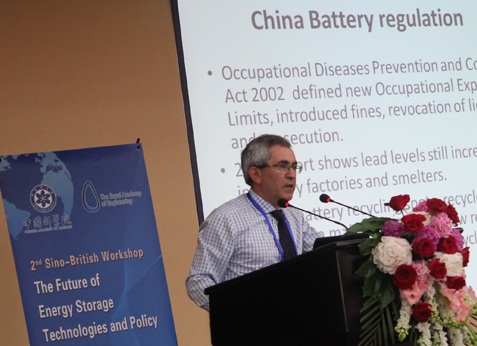The Future of Energy Storage: technologies and policy

Two high Рlevel workshops were jointly hosted by the Royal Academy of Engineering and the Chinese Academy of Sciences in 2100 to in London and Beijing to highlight areas where the UK and China might work together to accelerate the development of energy storage technologies [EST]. The report following the workshops has been released today.

The development of EST was seen as a serious option for managing the intermittency of low carbon generation technologies. It could also bring enhanced benefits to electricity networks by:
- Alleviation of transmission and distribution constraints
- Voltage control optimisation
- Provision of fast reserve.
- Tools to improve dynamic stability
Howeverkey questions remained including:
- How much storage was needed?
- What technologies should be developed?
- Where should these technologies be deployed (eg grid, city homes)?
Some of the key energy development needs in China arose from the growing demand for vehicles and the state was engaging with the private sector in examining the role to be played in the transport system by electric technology and batteries.
Other challenges include the growing demand for power during the summer peaks in large cities.
In the UK there are a number of electric vehicle initiatives with an emphasis on vehicles for private use. Legislation for de-carbonising industry and society is a strong driver for change, together with a number of regional schemes such as ‘Transport for London ( hydrogen buses), ‘Plugged in Places (12 towns) and related grid initiatives ( eg Low Carbon London).
Recommendations
To attract continued financial and political investment and support, it was essential that a technology and engineering road map be produced in each country,bearing in mind the differing scale of need, the levels of maturity of the energy systems and the differences in legal and regulatory frameworks.
Specific recommendations included:
- Develop more robust systems analysis and modelling
- Enhanced visibility for demonstration projects
- Identifying funding pathways for EST systems and related infrastructure
- Active encouragement of collaborative research, promoting innovation through prizes awards and scholarships.
- Establishment of a senior UK – China steering group to develop further collaborative activity.
For a link to the full Report please click here. The appendicies have many examples of planned EST projects in both UK and China
Originally posted 2012-09-14 00:00:00.


